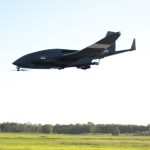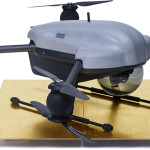By Connor Jensen
When the computer was first introduced, law enforcement agencies were hesitant to use them in policing, many feared the new technology. However, today every law enforcement agency in America makes use of computing technology. Similarly, today’s drones are starting to see their way into police work. Police should be able to use drones in their work to a limited extent.
One side of the argument claims that drones threaten our privacy. With the ability to fly and hover with high powered and thermal cameras, drones make surveillance much easier. But this raises the question of what makes a person a candidate for surveillance? Government agencies could easily gather information about any person. Hillary Farber writes, “Some anticipate that drone surveillance will eventually enable law enforcement to gather unprecedented amounts of information about individuals, making it virtually impossible to shield oneself from government watch.” This brings up the issue of drone surveillance violating our fourth amendment, which protects our privacy in our homes. However, agencies can get warrants on probable cause to go into someone’s home, but would a drone require a warrant to survey someone’s house? This has been seen in past court cases, one example being shown by Farber, “Florida v. Riley, another case involving aerial surveillance with the naked eye presented the question of whether surveillance of the interior of a partially covered greenhouse in a residential backyard from the vantage point of a helicopter located 400 feet above the greenhouse constitutes a ‘search’ for which a warrant is required under the Fourth Amendment.” The Court analogized to Ciraolo, finding that the aircraft was observing curtilage from navigable airspace. Under the Katz analysis, the Court stated that Riley had no reasonable expectation of privacy under the circumstances of this case.” Compared to helicopters or airplanes, drones are much less expensive and easier to operate, but could impede on our privacy if unregulated.
However, some think drone use by police could be a good thing. In many police situations, a bird’s eye view could help solve the issue without anyone being hurt. Drones can offer this view doing it cheaper than helicopters and being able to get into smaller places. Having a drone in a shooter situation can “not only provide the location of the shooter, but also an understanding of the surrounding area, offering valuable information such as the direction the shooter might be headed, escape routes for victims and the shooter’s firing line.” Surveillance is another area where drones could help police, instead of spending hours waiting and watching at a stake out the drones could do the watching. On report notes that “Rotors can be powered off while keeping the camera on — pointed and zoomed at the action — from concealed locations where humans cannot reach.” North Dakota has started using drones in their law enforcement. The law enforcement there describes some of the ways they use them saying, “They can locate wanted subjects, or reconstruct crime scenes or motor vehicle crash scenes. They can respond to natural or manmade disasters where we need a quick aerial analysis of what’s going on.” They also give an example of a situation in the past where a drone would have helped saying,
One situation here in North Dakota, a few years back, would be a perfect example of a drone being invaluable. A prisoner transport bus stopped at rest stop in a rural area west of Fargo. One of the prisoners jumped from the van and ran into a cornfield nearby. If we’d been able to quickly dispatch a law enforcement agency with the drone, we could have put the drone over the cornfield and caught the person in a relatively short period of time because of the ability to look down into the cornfield. It’s much clearer to look down than to look across.
Drones could help save lives and make better use of law enforcement’s time.
What can we expect for the future? Drones can be used by law enforcement to save time and even lives, however if this technology is used incorrectly drones could be used to disrupt our privacy rights. Police will have to deal with the use of this new technology correctly and let the public know exactly what they are doing with the drones. Minnesota is experiencing issues with this saying, “Residents of Minnesota’s largest county may soon notice police drones whizzing around overhead. The Hennepin County Sheriff’s Office (HCSO) has already deployed a small quadcopter, but what will surprise observers of that drone — assuredly the first of more to come — is the serious lack of oversight regarding its use. Law enforcement officials are able to use the drone to collect evidence without first obtaining a warrant, and they are still failing to explain the full scope of the program.” Police must be willing to take it slow with the use of drones and not go beyond the public’s expected limits of use. Drones are increasing in popularity. Farber reports that, “By 2020, it is estimated that 30,000 drones will be occupying national airspace.” We will have to adapt to the use of drones and find a medium where police can use them while not taking away privacy.
The public’s fear of drone use by law enforcement is similar to the fear of law enforcement using computers when that technology was emerging. Through the police being open and showing the public all the good that drones can do, they might become a common sight in the near future. However, if the privacy of the public is violated, it will be much more difficult for the police to be trusted with drones. However, there can be a compromise that can change policing and, in turn, what criminals do.


